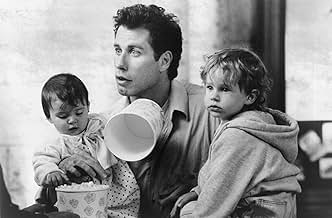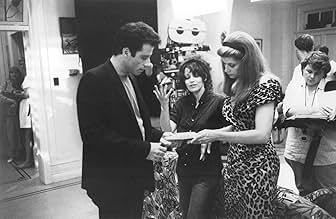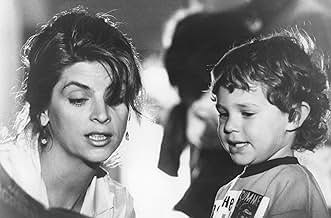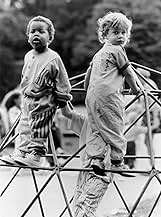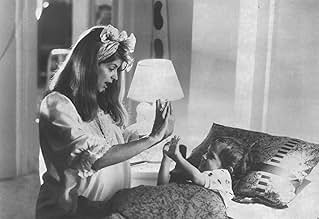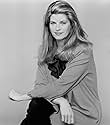ÉVALUATION IMDb
4,7/10
50 k
MA NOTE
Cette fois, un nouveau bébé arrive, et c'est une fille. Enveloppé avec le conflit standard entre mère et père, Mikey s'engage dans une petite rivalité fraternelle avec sa nouvelle soeur.Cette fois, un nouveau bébé arrive, et c'est une fille. Enveloppé avec le conflit standard entre mère et père, Mikey s'engage dans une petite rivalité fraternelle avec sa nouvelle soeur.Cette fois, un nouveau bébé arrive, et c'est une fille. Enveloppé avec le conflit standard entre mère et père, Mikey s'engage dans une petite rivalité fraternelle avec sa nouvelle soeur.
- Prix
- 3 nominations au total
Bruce Willis
- Mikey
- (voice)
Roseanne Barr
- Julie
- (voice)
Damon Wayans
- Eddie
- (voice)
Mel Brooks
- Mr. Toilet Man
- (voice)
Histoire
Le saviez-vous
- AnecdotesThe Learjet featured in the movie was owned by John Travolta at the time the movie was made. Tail number N254JT. JT = John Travolta.
- GaffesWhen Mollie and James are having an argument in the hallway in front of their apartment, the door to their apartment is sometimes ajar, sometimes wide open.
- Citations
Mollie Ubriacco: Mommy is a girl, so I don't have a penis.
James Ubriacco: But she's got some set of balls.
Mollie Ubriacco: But Daddy is a big...
Mikey: Penis!
- Générique farfeluAt the beginning, the Tri-Star Pictures horse is talking about running and when he starts to fly he says "I have wings! Tri-Star Pictures - Anything can happen!". Later in the film the same Tri-Star Pictures theme is used.
- Autres versionsThe UK cinema version was cut by the BBFC to remove the line "Why don't you put me in a fucking dress?". The cut was restored to all later releases.
- ConnexionsFeatured in Troldspejlet: Episode #4.5 (1991)
- Bandes originalesAll Shook Up
Written by Otis Blackwell & Elvis Presley
Performed by Elvis Presley
Courtesy of RCA Records
Commentaire en vedette
My review was written in December 1990 after a screening on Manhattan's UES.
This vulgar sequel to 1989's longest-running sleeper hit is assured of big openings due to its predecessor's familiarity but bad word of mouth should guarantee weak legs.
Few predicted the success of the same team's "Look Who's Talking", launched after delays in October 1989 to enjoy an unusually long 30-week U. S. run en route to ranking among the '89-'90 international box office leaders.
Credit TriStar with getting a followup into theaters in timely fashion to maximize its box office potential, but the resulting mishmash looks like a rush job.
Joined by her husband Neal Israel (who also appears as star Kirstie Alley's mean boss) in the scripting, filmmaker Amy Heckerling overemphasizes toilet humor and expletive - none deleted - to make the film appealing mainly to adolescents rather than an across-the-board family audience.
Unwed mom Alley and cabbie John Travolta are married for the sequel, with her cute son metamorphosed into Lorne Sussman, still voice-overed as precocious by Bruce Willis. First mutual arrival is conceived during a clever title sequence in which some sperm (also getting comical voice-overs) manage to find a way around Alley's diaphragm and fertilize an egg.
What hatches is undeniably cute Megan Miller (at 1 year old, after infants Nikki Graham and Georgia Keithley voiced over baby Julie), unforunately voiced over by Roseanne Barr. The comedienne gets a couple of laughs but is generally dull, leaving Willis to again carry the load in the gag department with well-read quips.
Lack of an interesting plot line is evident throughout the sequel's abbreviated 81-minute running time. Ostensibly it revolves around the bickering of Alley and Travolta whose jobs (accountant and would-be airplane pilot) and personalities clash, as well as the rites of passage of the two kids. New characters, notably Alley's obnoxious brother Elias Koteas, are added to ill effect.
An unconscionable amount of footage is devoted to the issue of potty training. Mel Brooks is enlisted to voice-over Mr. Toilet Man, a fantasy bathroom bowl come to life, spitting blue water and anxious to bite off Mikey's privates. Family's ecstatic reactions to Mikey finally learning toiletiquette is pure corn.
Alley and Travolta are a likable team that play off each other well. Too bad Hollywood doesn't take a leaf from the Golden Age and find new material for such romantic combos (a la '30 Fred MacMurray/Carole Lombard or '40s Tracy/Hepburn teamings) rather than merely recycle them in the sequel craze.. Both youngsters are cute enough to please an undemanding audience, and with an eye towards the cash register a third infant lovable black tot Danny Pringle, is added in a few scenes as a precociously streetwise playmate for Mikey.
Richard Pryor originally was signed to voice-over Pringle's wisecracks but was inexplicably replaced by Damon Wayans who does a good job in delivering knowing but young-sounding jive. All three kids articulate while the voicing occurs in a non-match that resembles the visual effect of a dubbed-in-English Japanese horror movie.
One cute gag involves the playing of the TriStar logo musical theme (by Dave Grusin) to climax a scene where Richard Strauss' "Thus Sprach Zarathustra" form "2001: A Space Odyssey" is traditionally employed. Elsewhere there's plenty of paid-for plugola.
With Koteas a gun-toting babysitter who abandons the kis to an accidental fire in their apartment, film strays far from good taste and good sense in a desperate search for gags. Various creature effects, notably Julie growing in mom's womb, are well executed by Chris Walas' organization and New York locale for this Vancouver-lensed effort is adequately fake by some second unit shots.
Conspicuous sequel "beefing up" is most evident in pointless inclusion of many golden oldies on the soundtrack, ranging from expensive Elvis Presley tracks (allowing Travolta to throw in one of his trademark dance numbers) to John Lennon and George Harrison.
This vulgar sequel to 1989's longest-running sleeper hit is assured of big openings due to its predecessor's familiarity but bad word of mouth should guarantee weak legs.
Few predicted the success of the same team's "Look Who's Talking", launched after delays in October 1989 to enjoy an unusually long 30-week U. S. run en route to ranking among the '89-'90 international box office leaders.
Credit TriStar with getting a followup into theaters in timely fashion to maximize its box office potential, but the resulting mishmash looks like a rush job.
Joined by her husband Neal Israel (who also appears as star Kirstie Alley's mean boss) in the scripting, filmmaker Amy Heckerling overemphasizes toilet humor and expletive - none deleted - to make the film appealing mainly to adolescents rather than an across-the-board family audience.
Unwed mom Alley and cabbie John Travolta are married for the sequel, with her cute son metamorphosed into Lorne Sussman, still voice-overed as precocious by Bruce Willis. First mutual arrival is conceived during a clever title sequence in which some sperm (also getting comical voice-overs) manage to find a way around Alley's diaphragm and fertilize an egg.
What hatches is undeniably cute Megan Miller (at 1 year old, after infants Nikki Graham and Georgia Keithley voiced over baby Julie), unforunately voiced over by Roseanne Barr. The comedienne gets a couple of laughs but is generally dull, leaving Willis to again carry the load in the gag department with well-read quips.
Lack of an interesting plot line is evident throughout the sequel's abbreviated 81-minute running time. Ostensibly it revolves around the bickering of Alley and Travolta whose jobs (accountant and would-be airplane pilot) and personalities clash, as well as the rites of passage of the two kids. New characters, notably Alley's obnoxious brother Elias Koteas, are added to ill effect.
An unconscionable amount of footage is devoted to the issue of potty training. Mel Brooks is enlisted to voice-over Mr. Toilet Man, a fantasy bathroom bowl come to life, spitting blue water and anxious to bite off Mikey's privates. Family's ecstatic reactions to Mikey finally learning toiletiquette is pure corn.
Alley and Travolta are a likable team that play off each other well. Too bad Hollywood doesn't take a leaf from the Golden Age and find new material for such romantic combos (a la '30 Fred MacMurray/Carole Lombard or '40s Tracy/Hepburn teamings) rather than merely recycle them in the sequel craze.. Both youngsters are cute enough to please an undemanding audience, and with an eye towards the cash register a third infant lovable black tot Danny Pringle, is added in a few scenes as a precociously streetwise playmate for Mikey.
Richard Pryor originally was signed to voice-over Pringle's wisecracks but was inexplicably replaced by Damon Wayans who does a good job in delivering knowing but young-sounding jive. All three kids articulate while the voicing occurs in a non-match that resembles the visual effect of a dubbed-in-English Japanese horror movie.
One cute gag involves the playing of the TriStar logo musical theme (by Dave Grusin) to climax a scene where Richard Strauss' "Thus Sprach Zarathustra" form "2001: A Space Odyssey" is traditionally employed. Elsewhere there's plenty of paid-for plugola.
With Koteas a gun-toting babysitter who abandons the kis to an accidental fire in their apartment, film strays far from good taste and good sense in a desperate search for gags. Various creature effects, notably Julie growing in mom's womb, are well executed by Chris Walas' organization and New York locale for this Vancouver-lensed effort is adequately fake by some second unit shots.
Conspicuous sequel "beefing up" is most evident in pointless inclusion of many golden oldies on the soundtrack, ranging from expensive Elvis Presley tracks (allowing Travolta to throw in one of his trademark dance numbers) to John Lennon and George Harrison.
- lor_
- 2 juin 2023
- Lien permanent
Meilleurs choix
Connectez-vous pour évaluer et surveiller les recommandations personnalisées
Détails
- Date de sortie
- Pays d’origine
- Langue
- Aussi connu sous le nom de
- Look Who's Talking Too
- Lieux de tournage
- sociétés de production
- Consultez plus de crédits d'entreprise sur IMDbPro
Box-office
- Brut – États-Unis et Canada
- 47 789 074 $ US
- Fin de semaine d'ouverture – États-Unis et Canada
- 8 100 640 $ US
- 16 déc. 1990
- Brut – à l'échelle mondiale
- 47 789 074 $ US
- Durée1 heure 21 minutes
- Couleur
- Rapport de forme
- 1.85 : 1
Contribuer à cette page
Suggérer une modification ou ajouter du contenu manquant

Lacune principale
By what name was De quoi j'me mêle encore (1990) officially released in India in English?
Répondre

